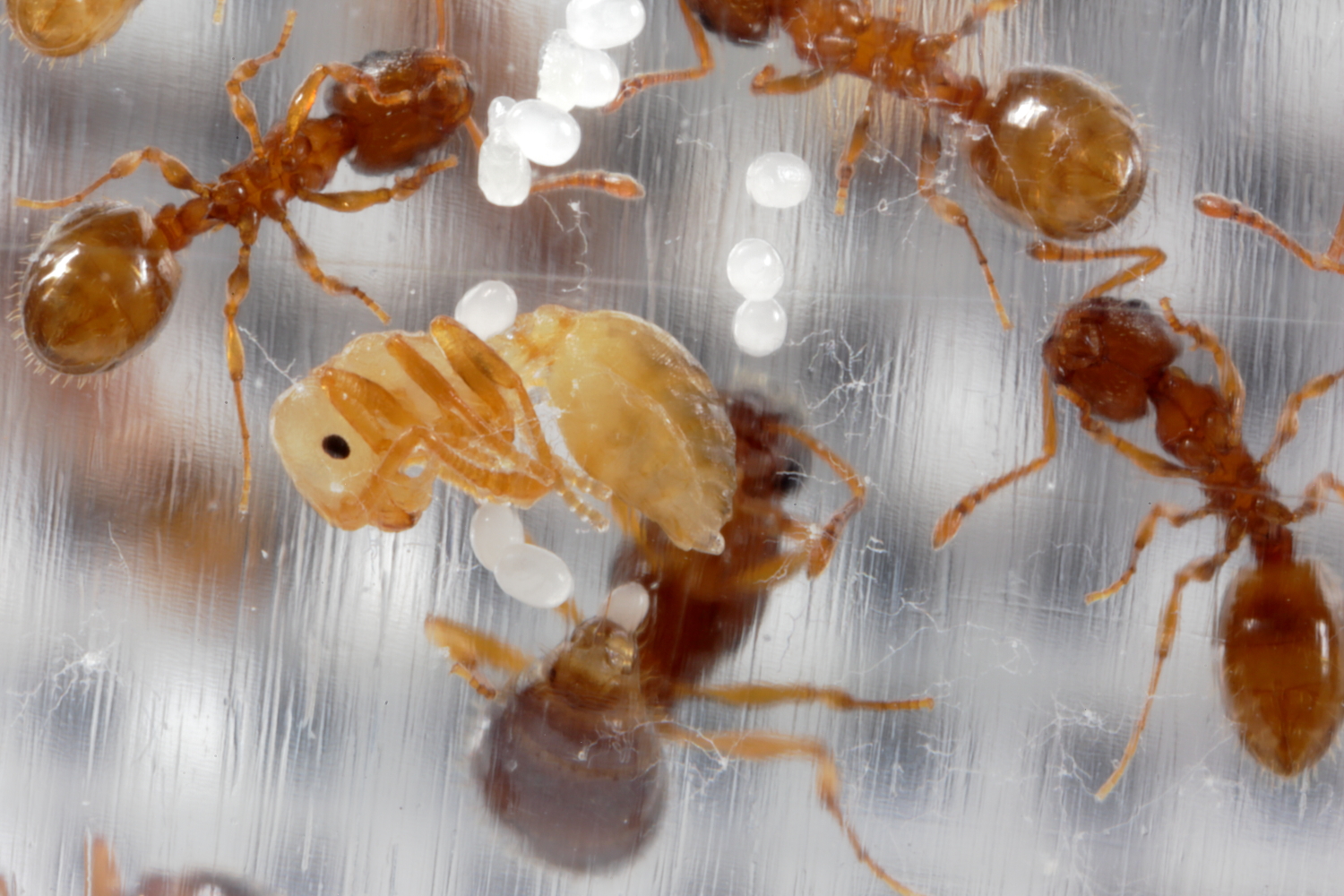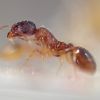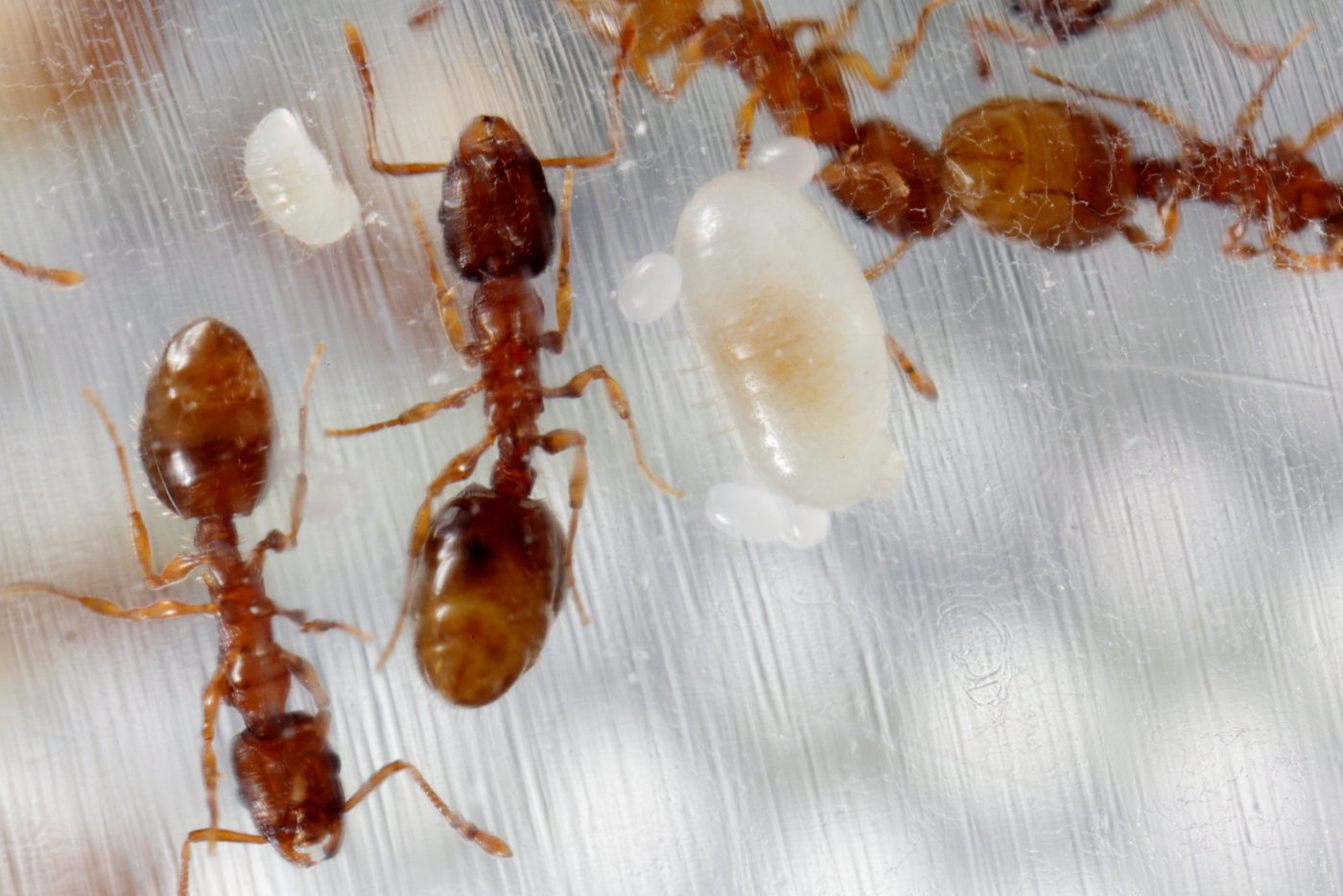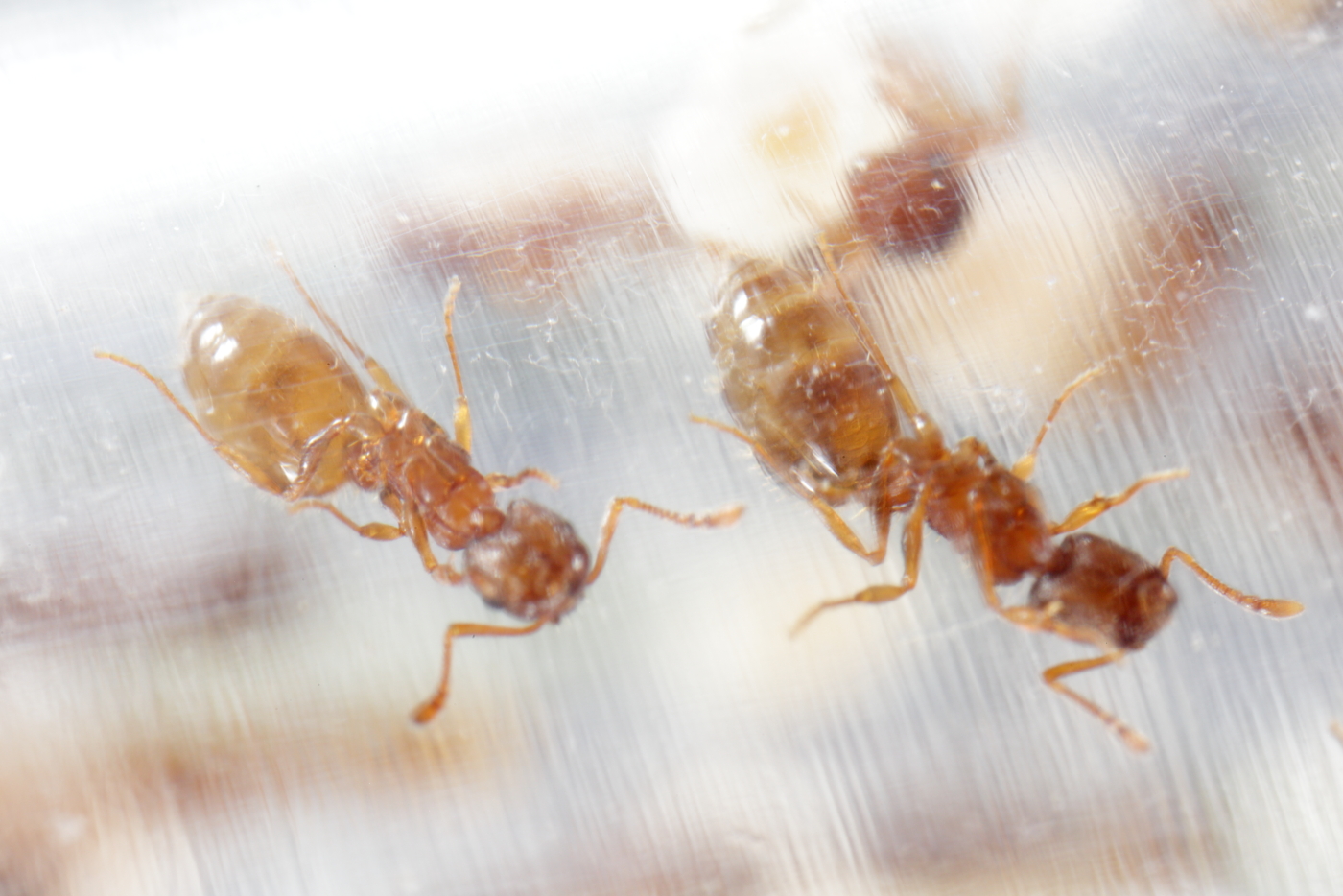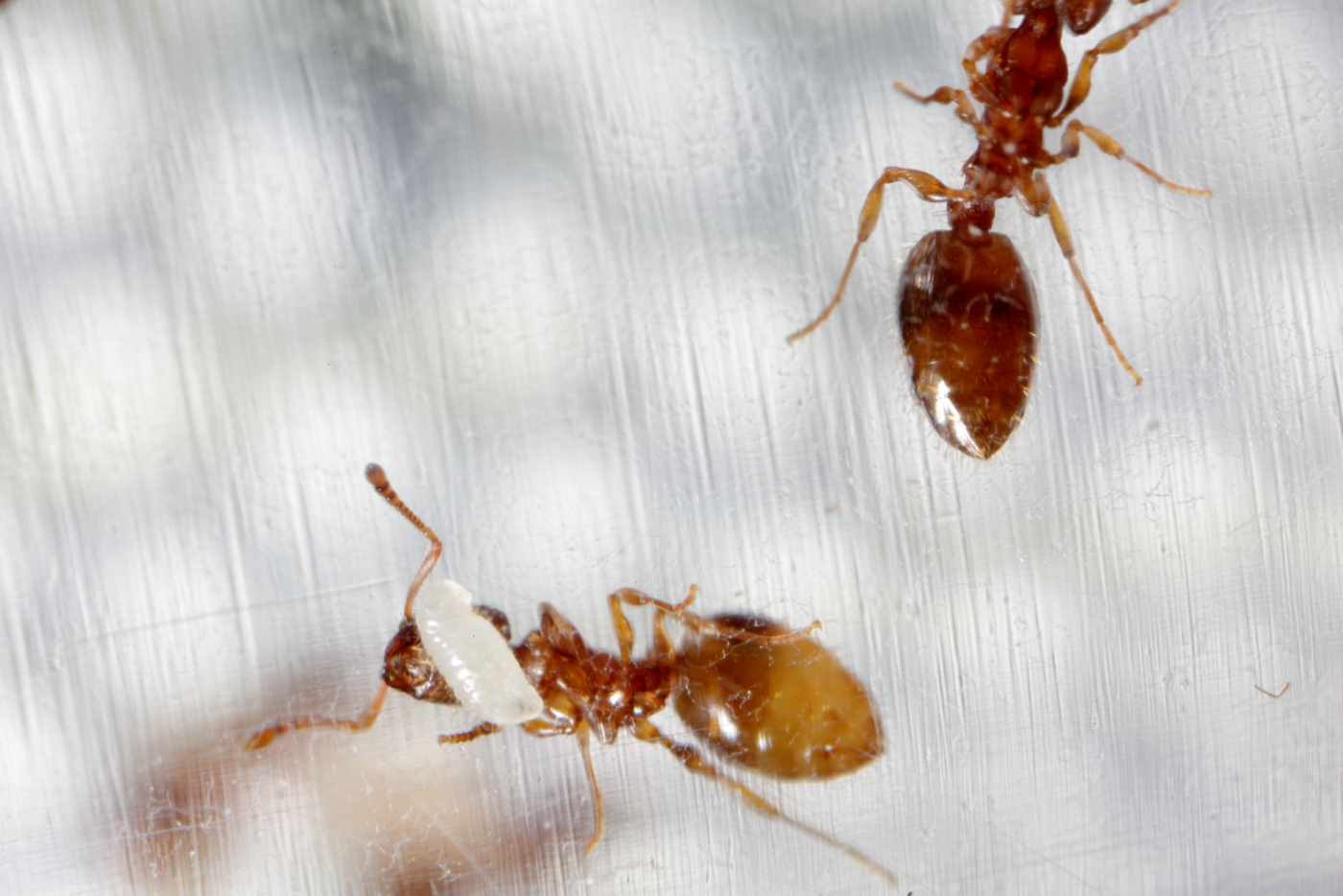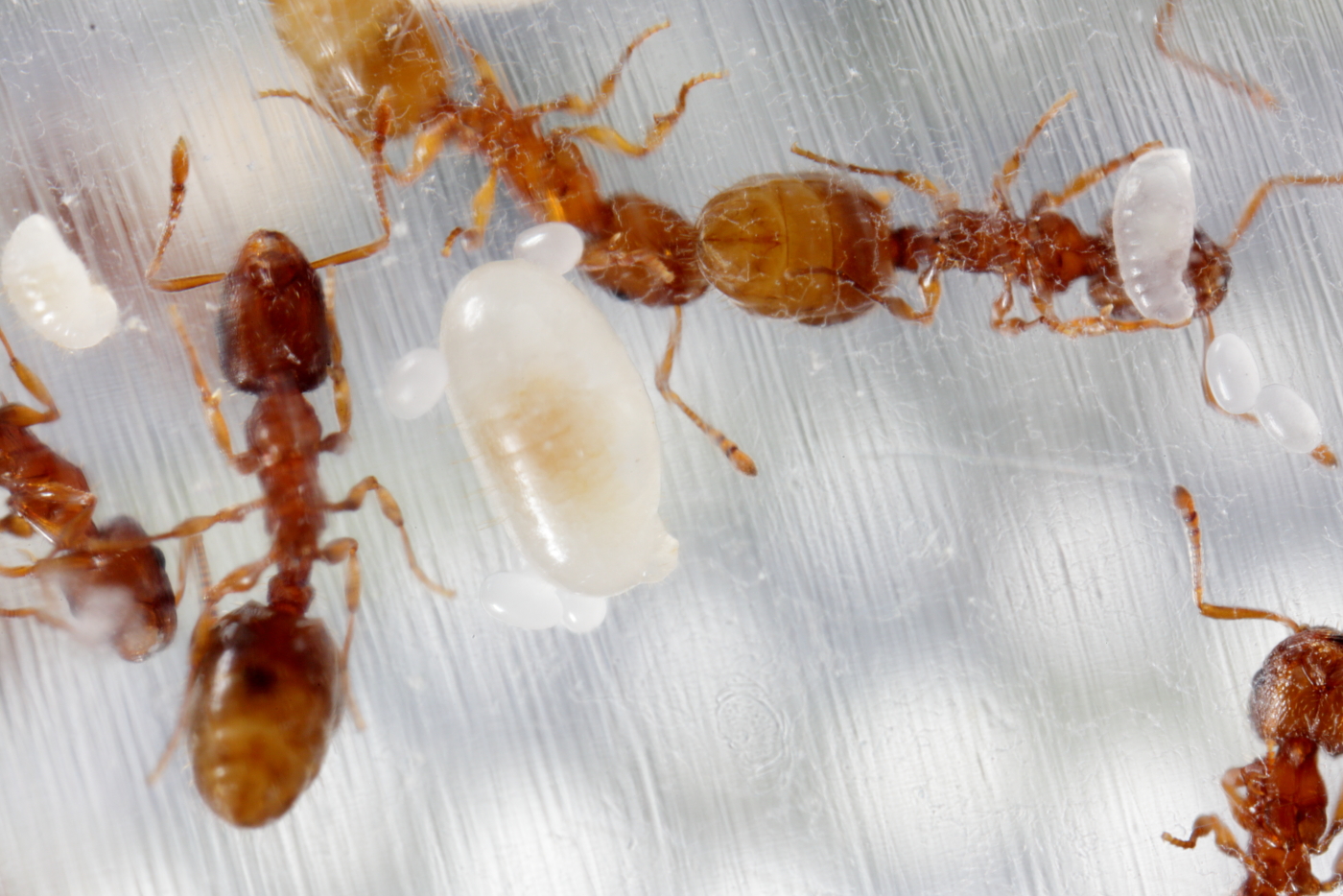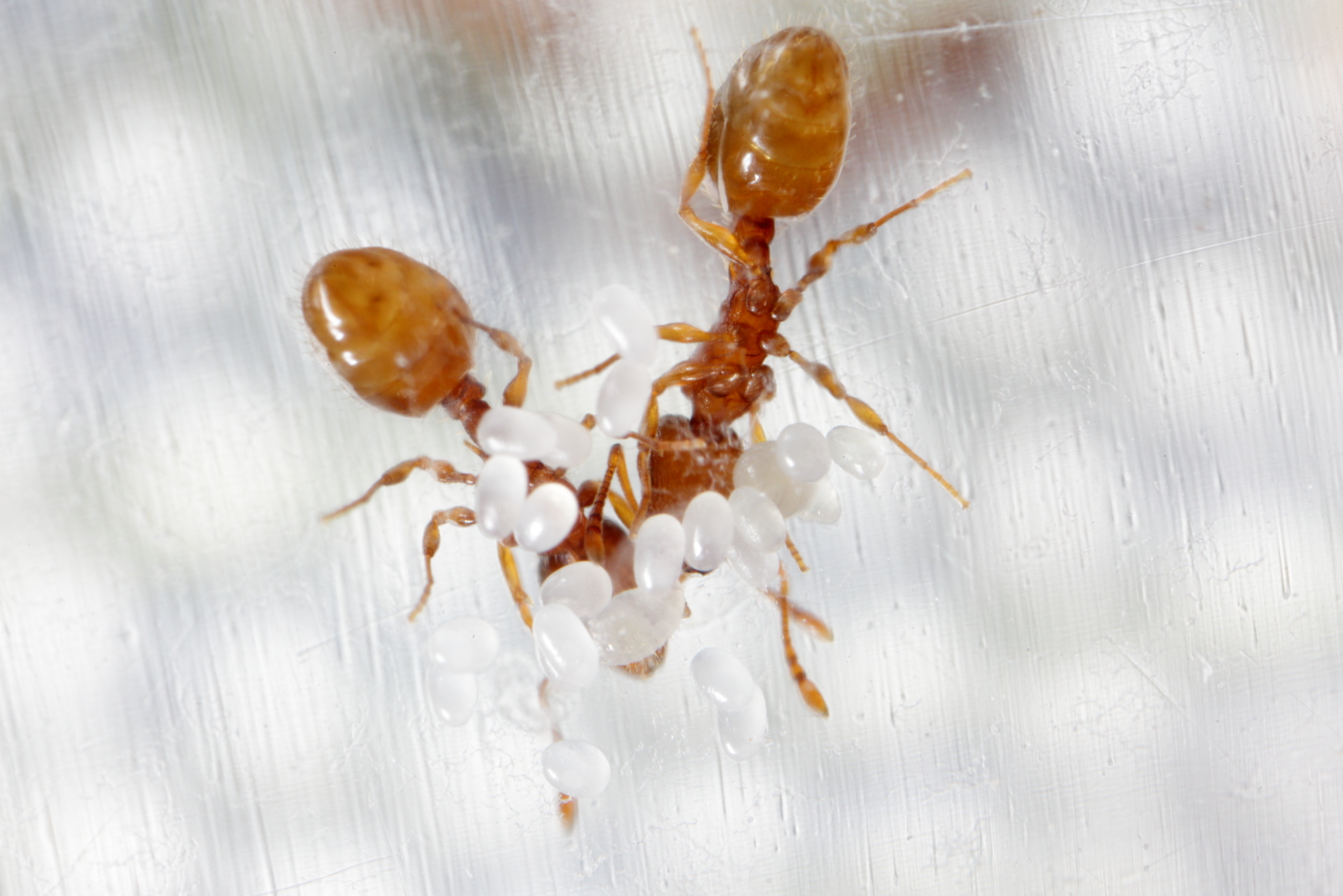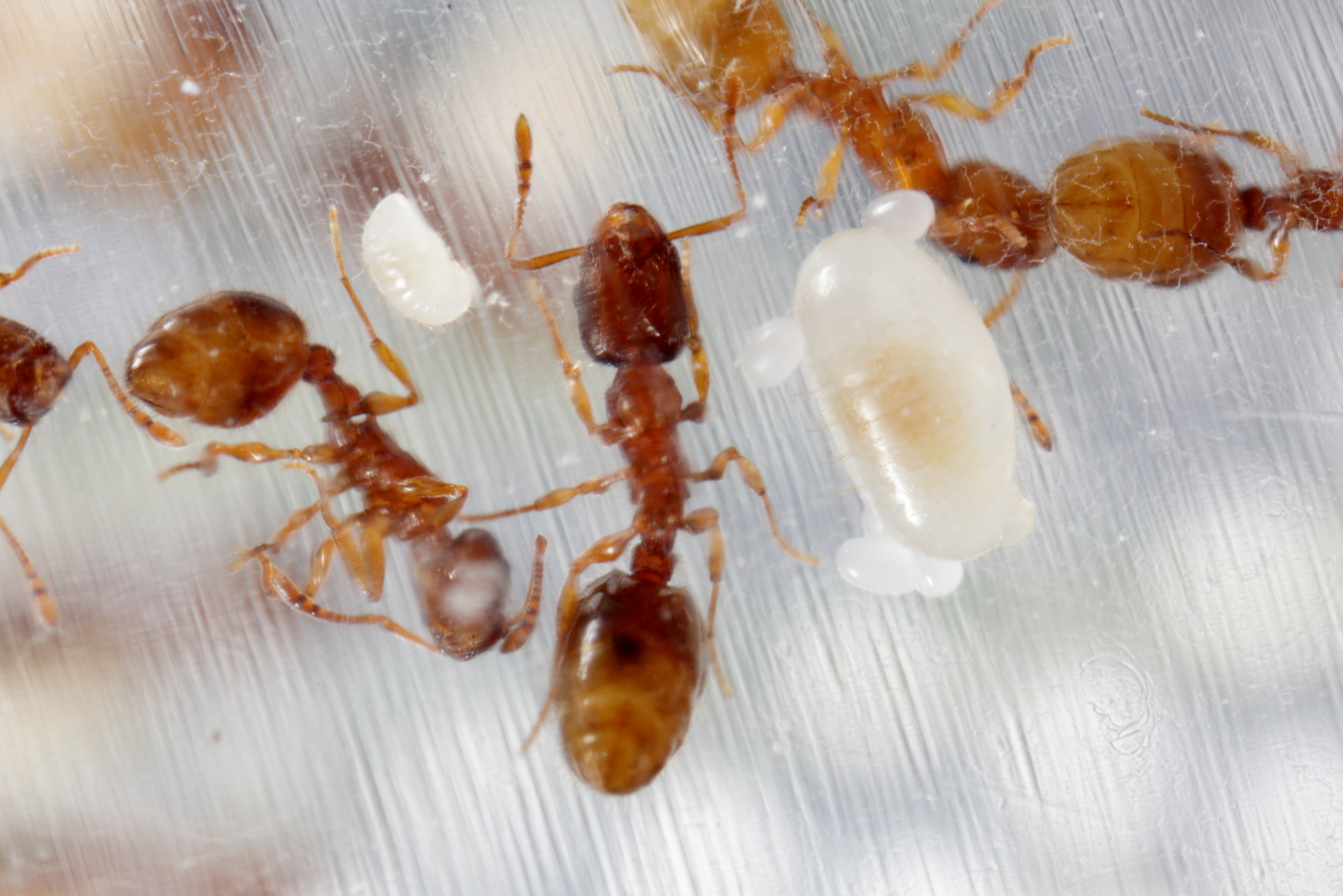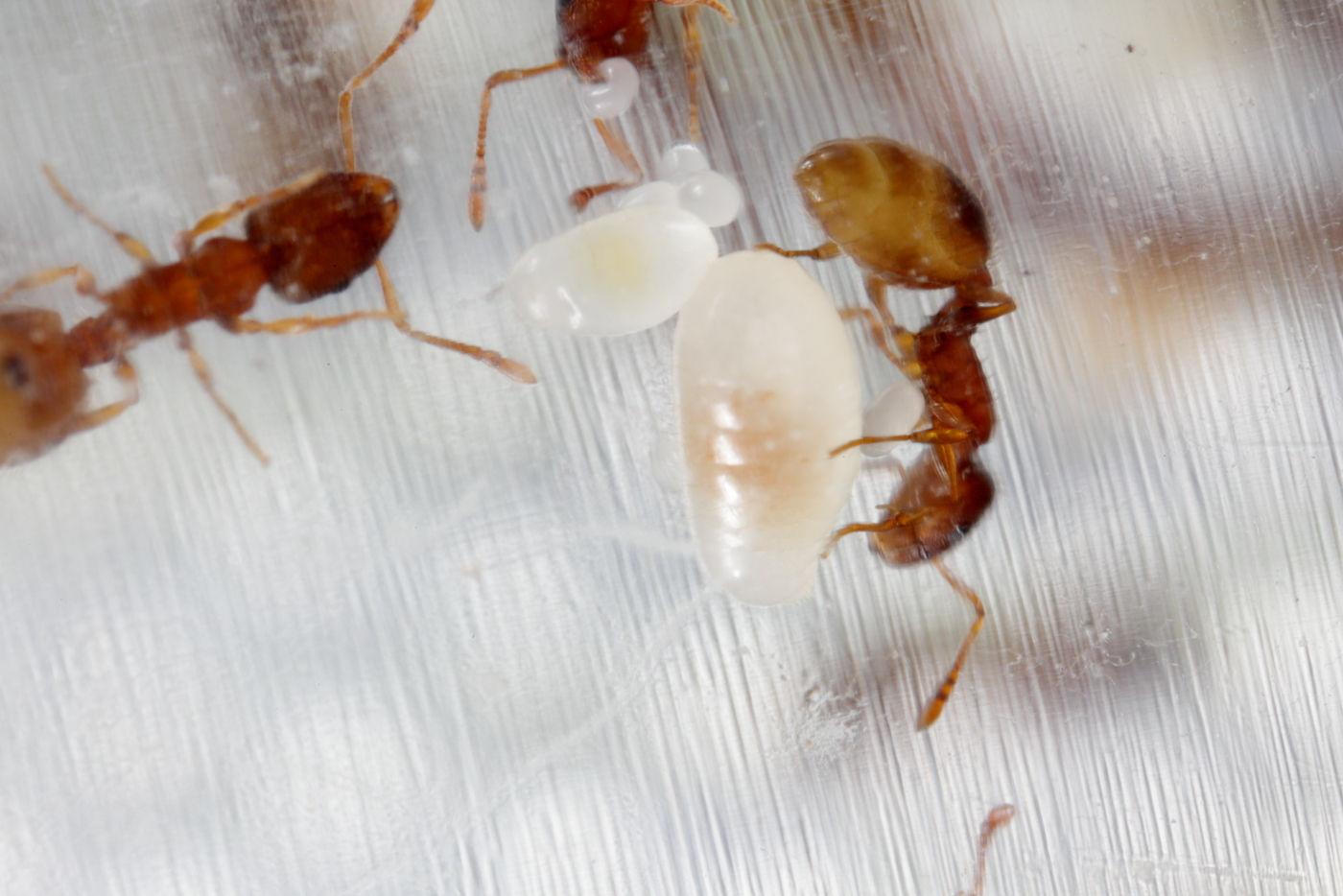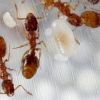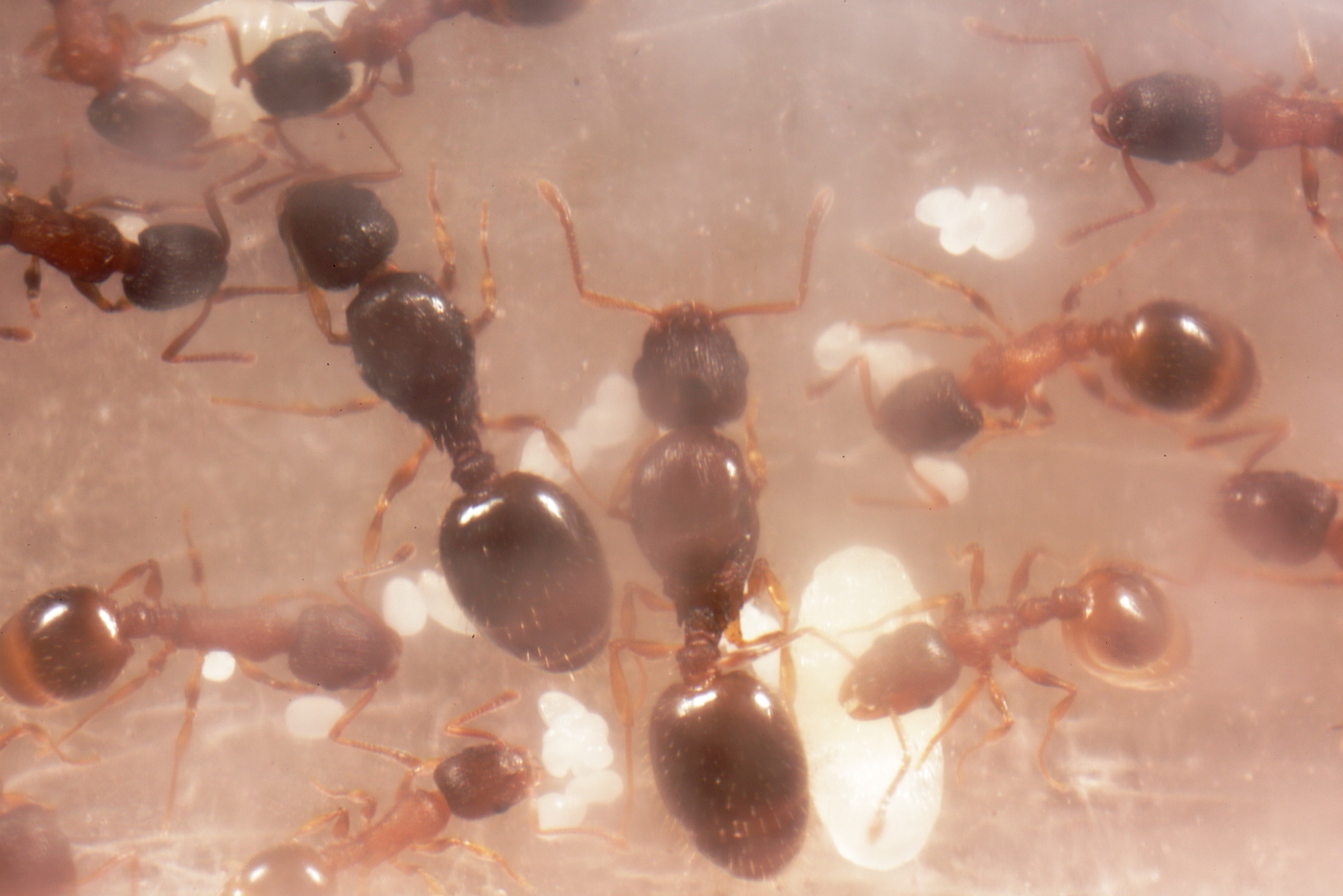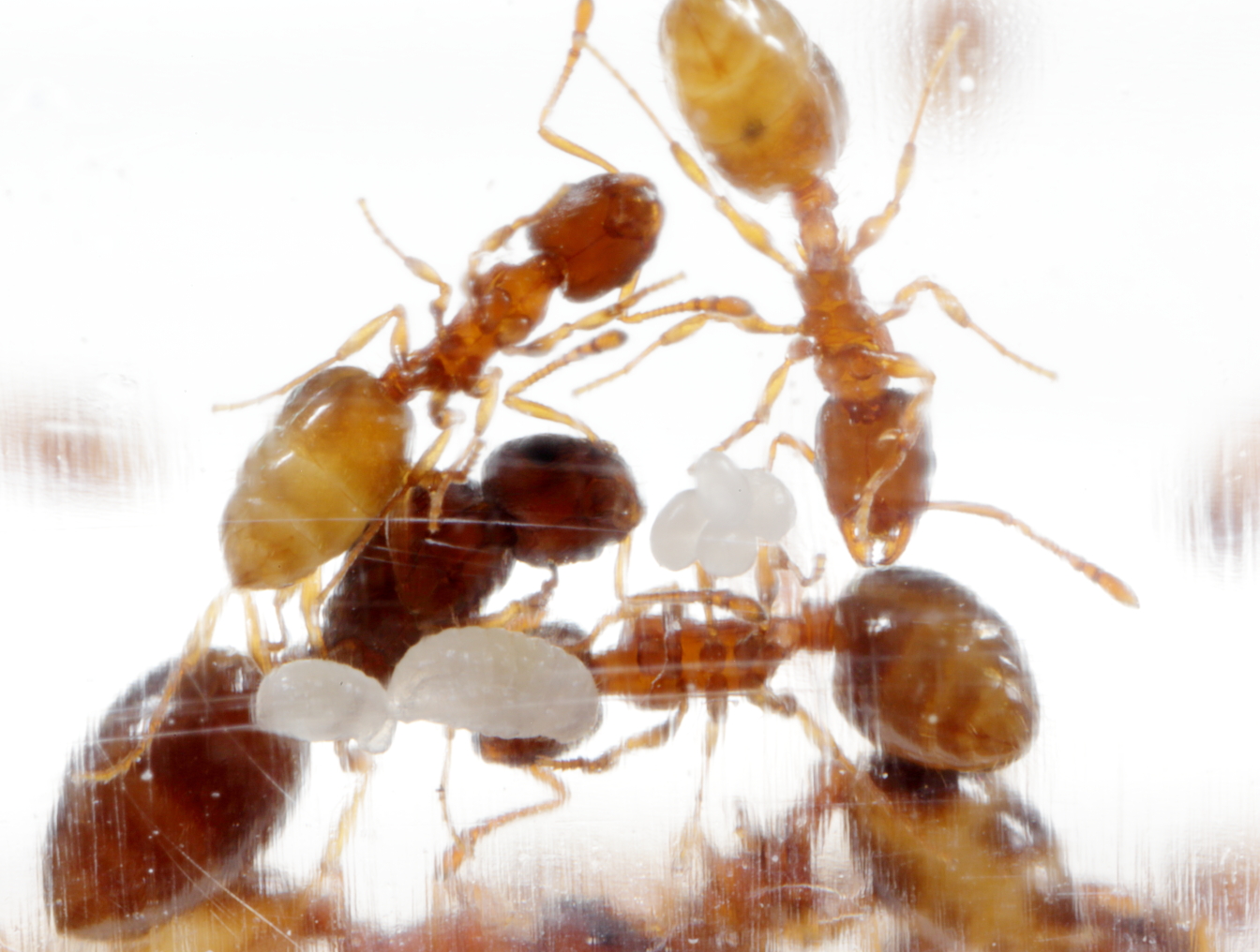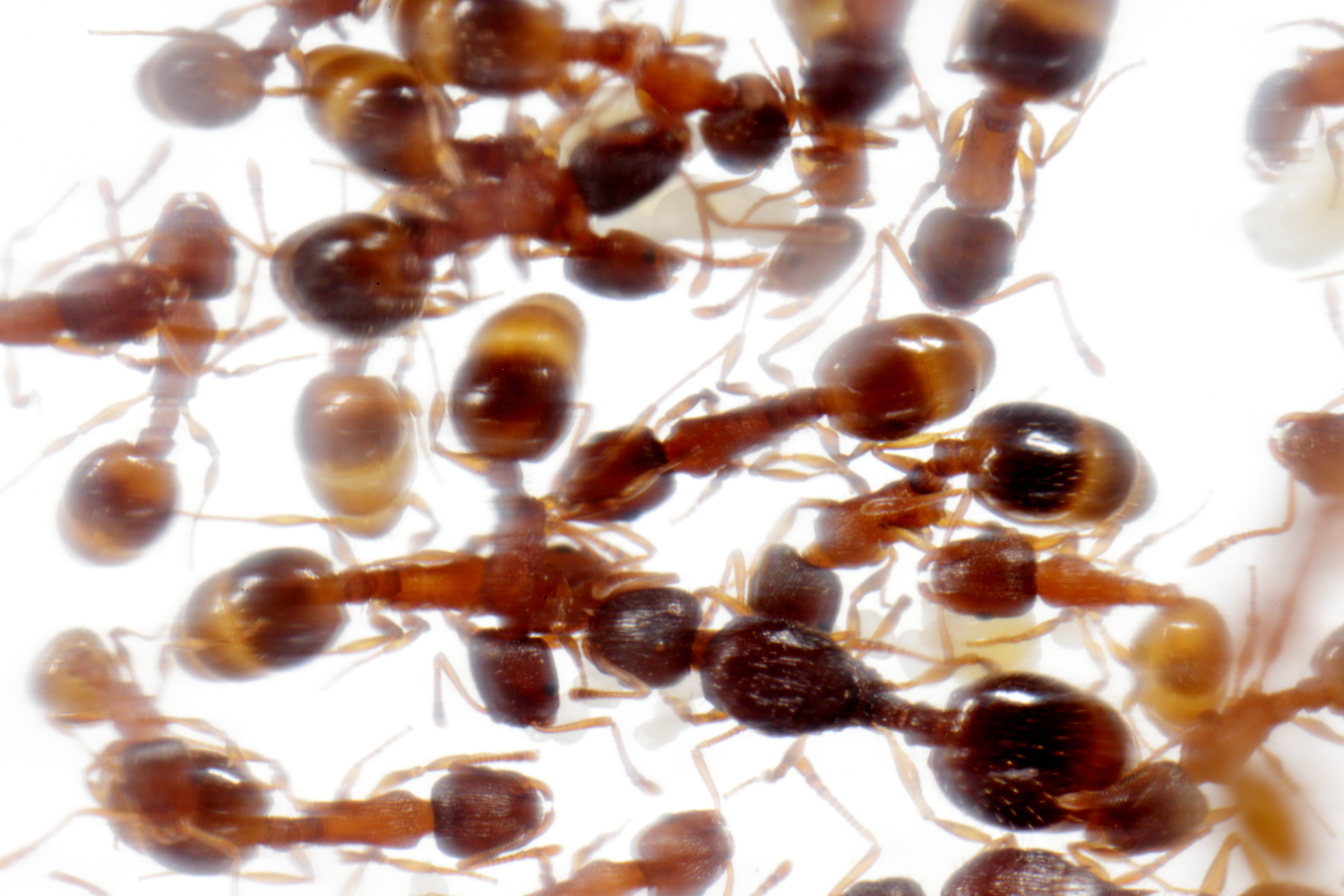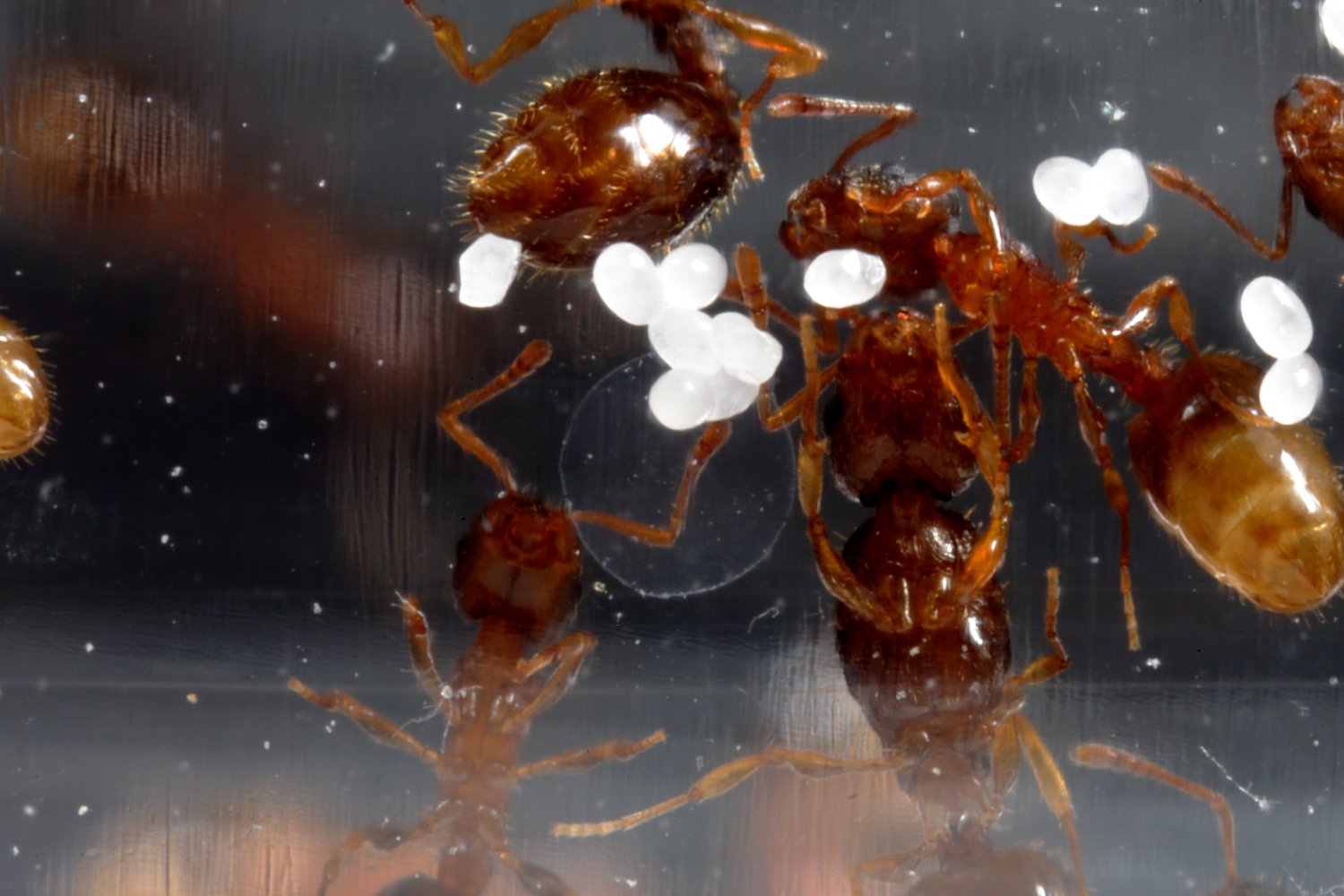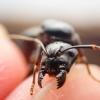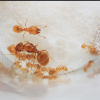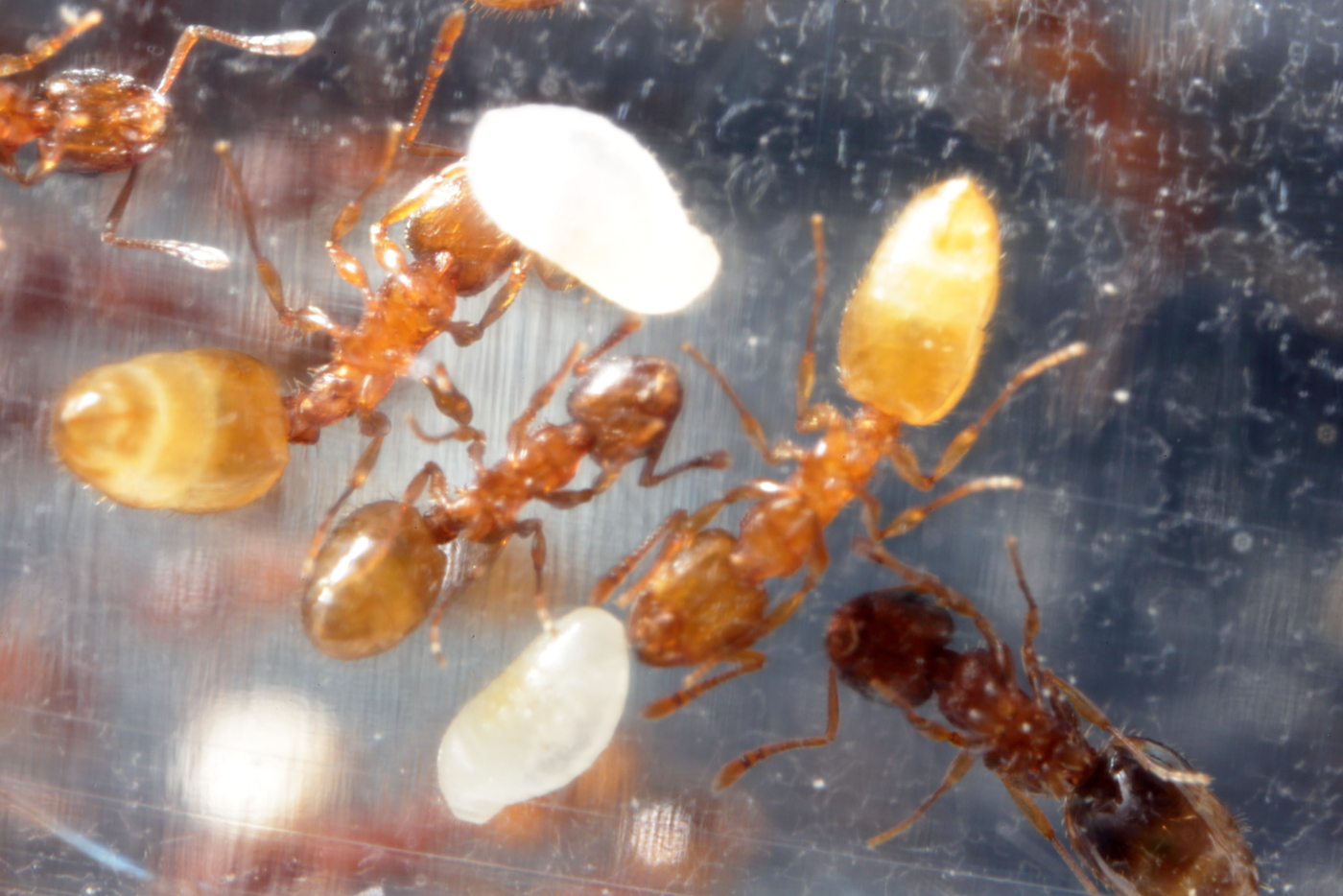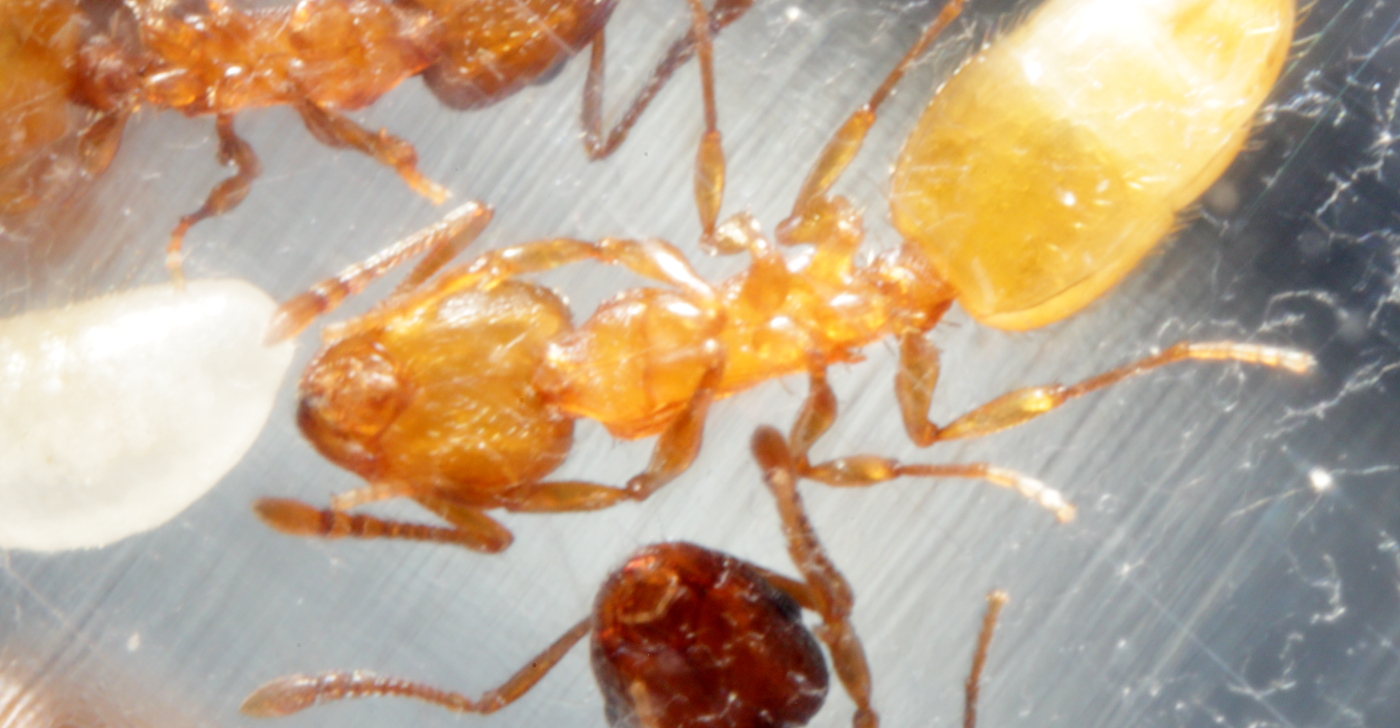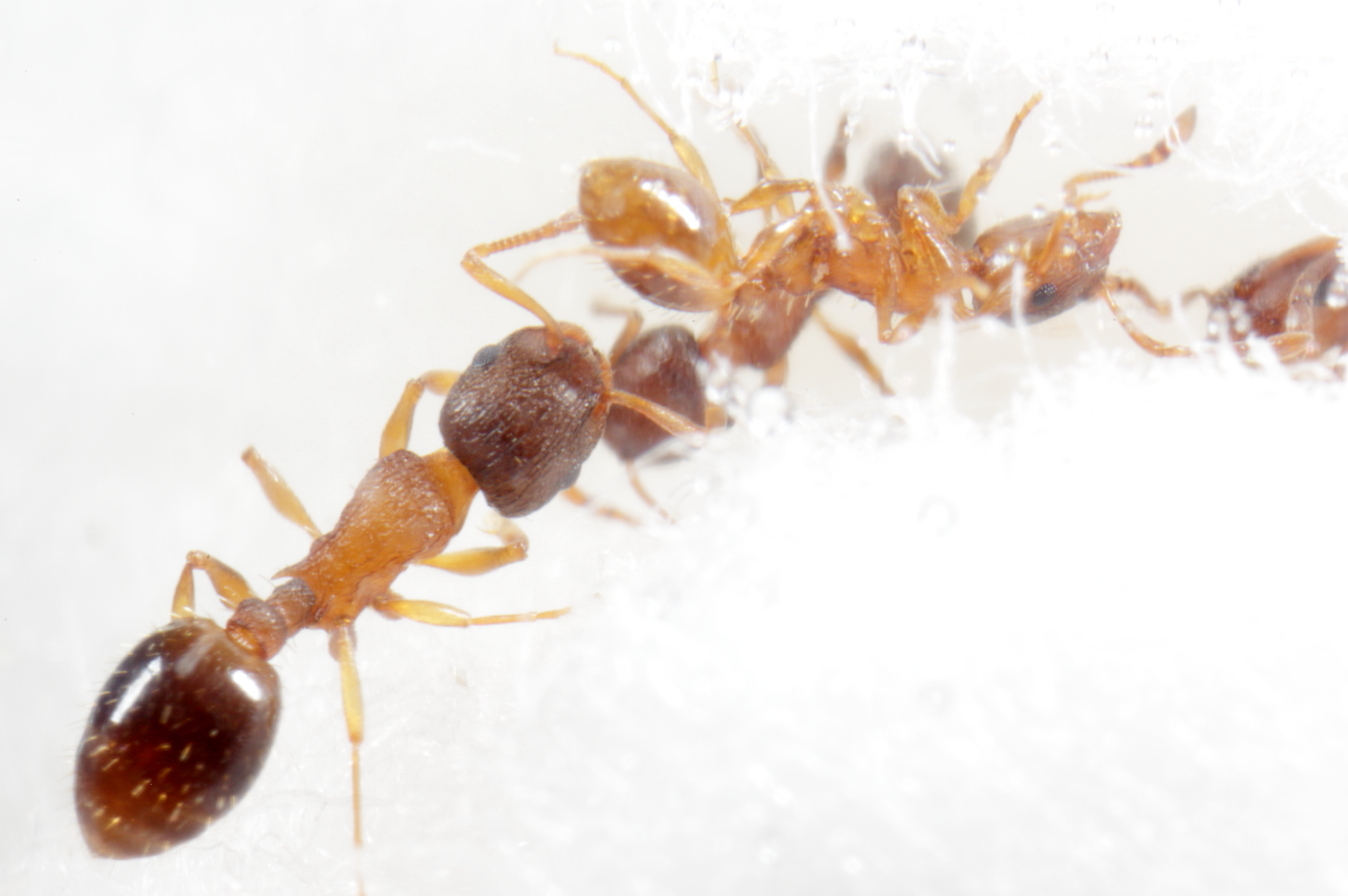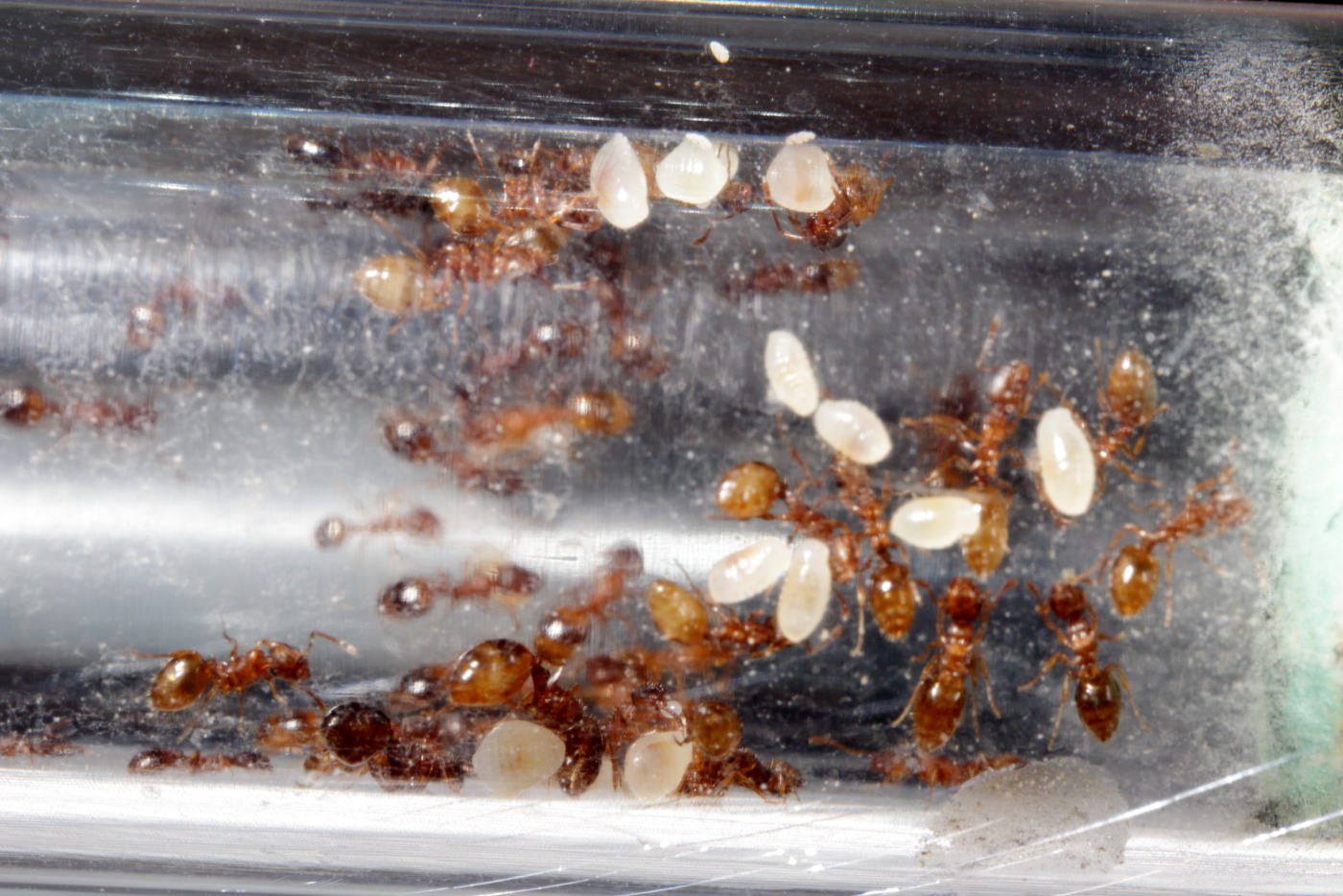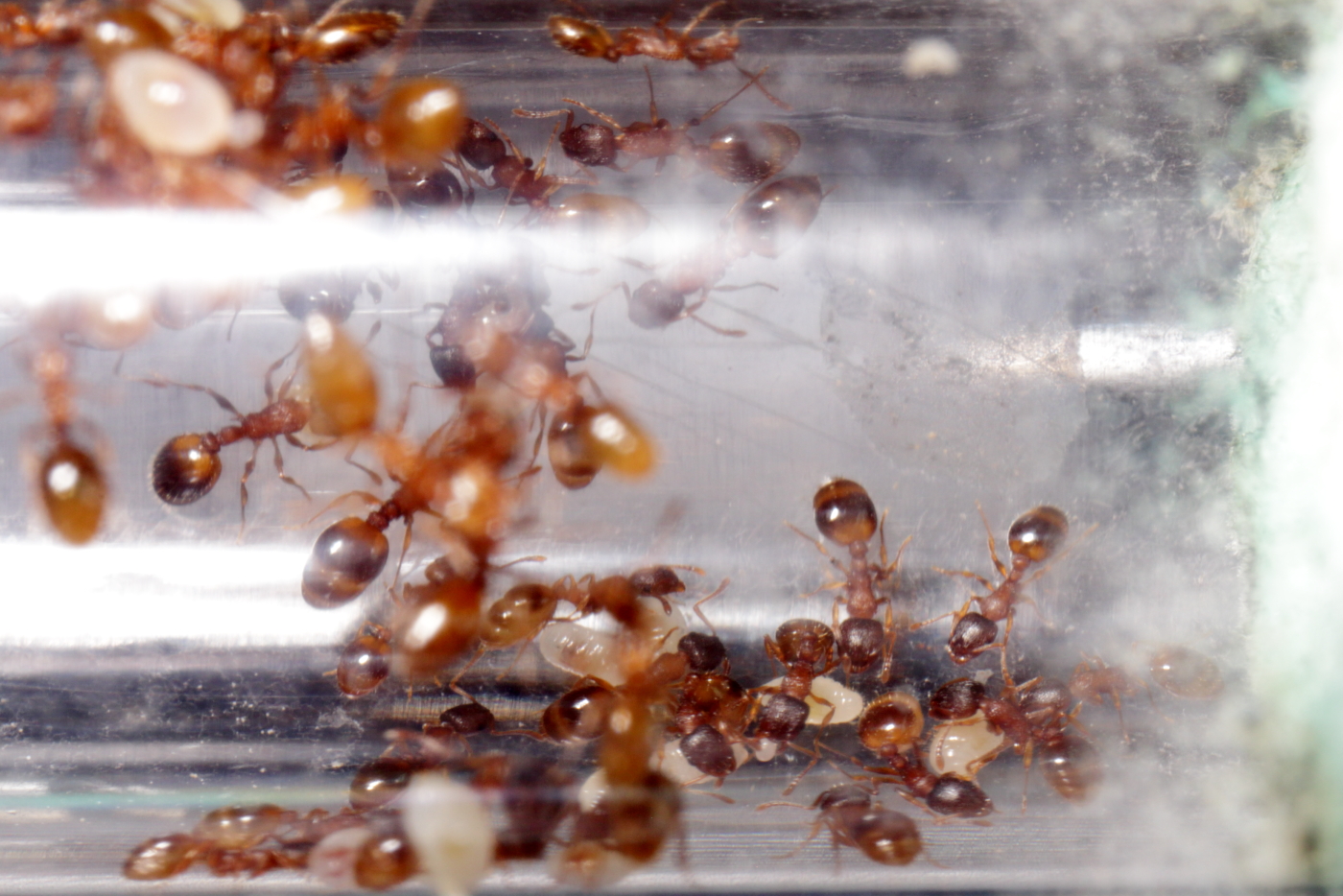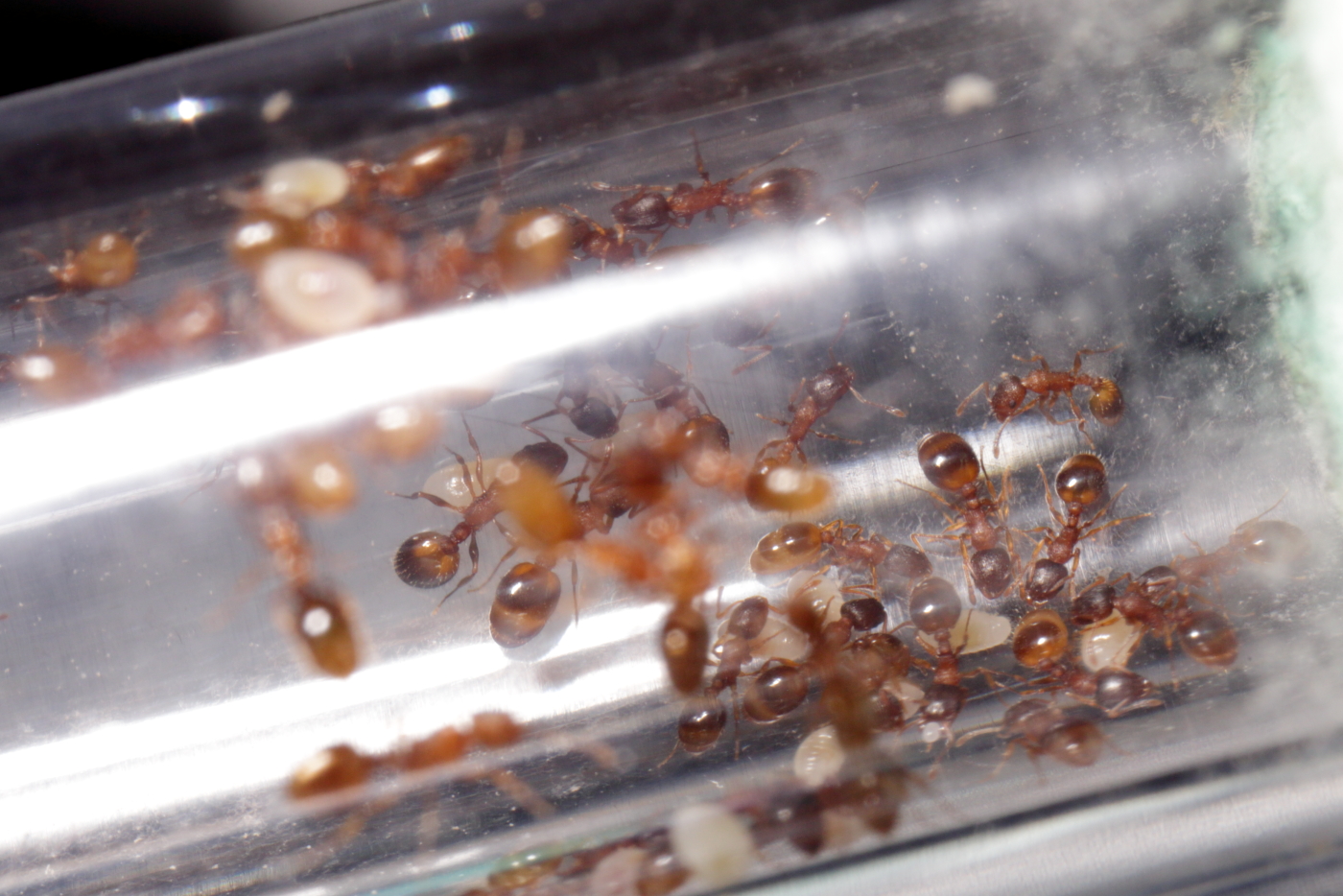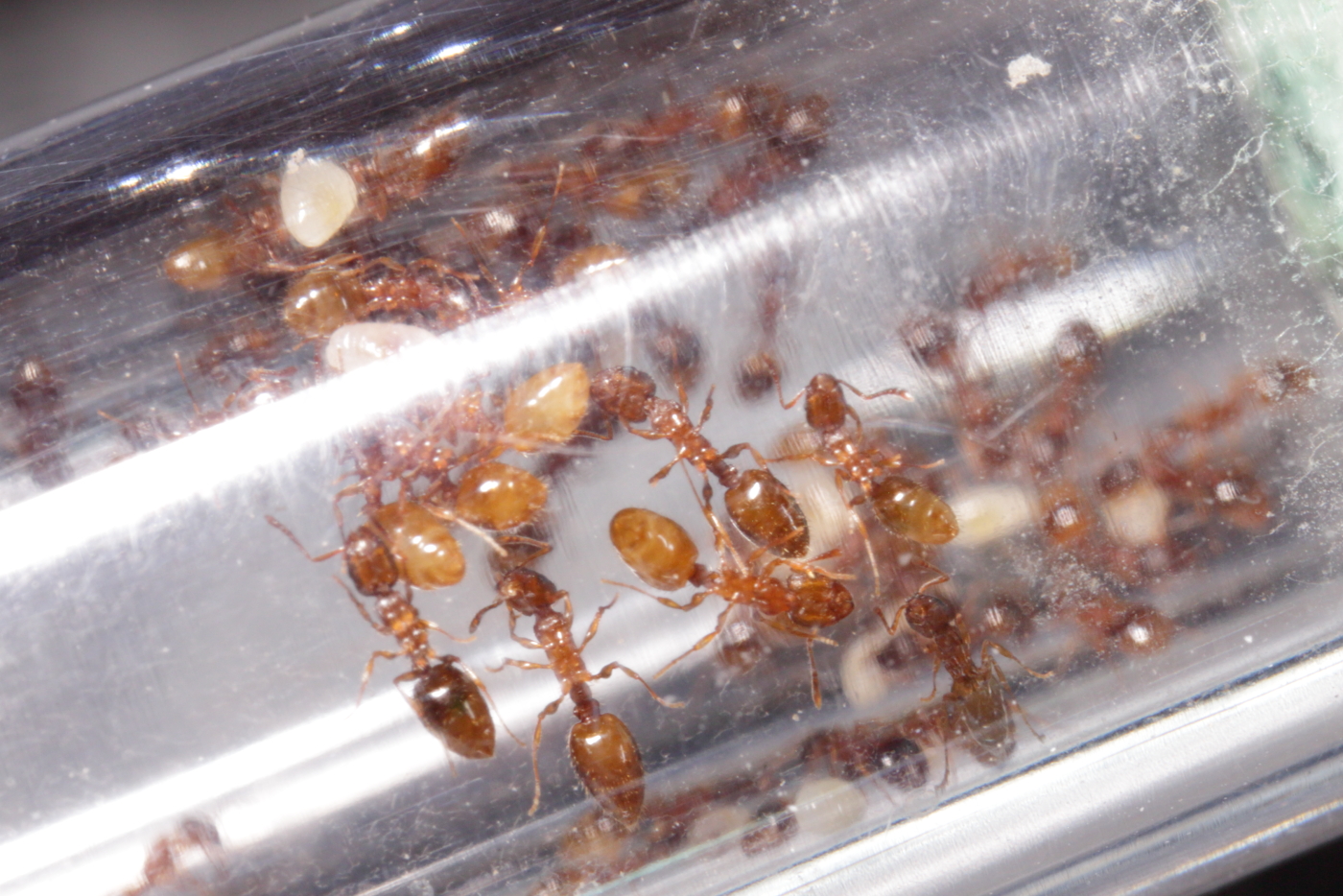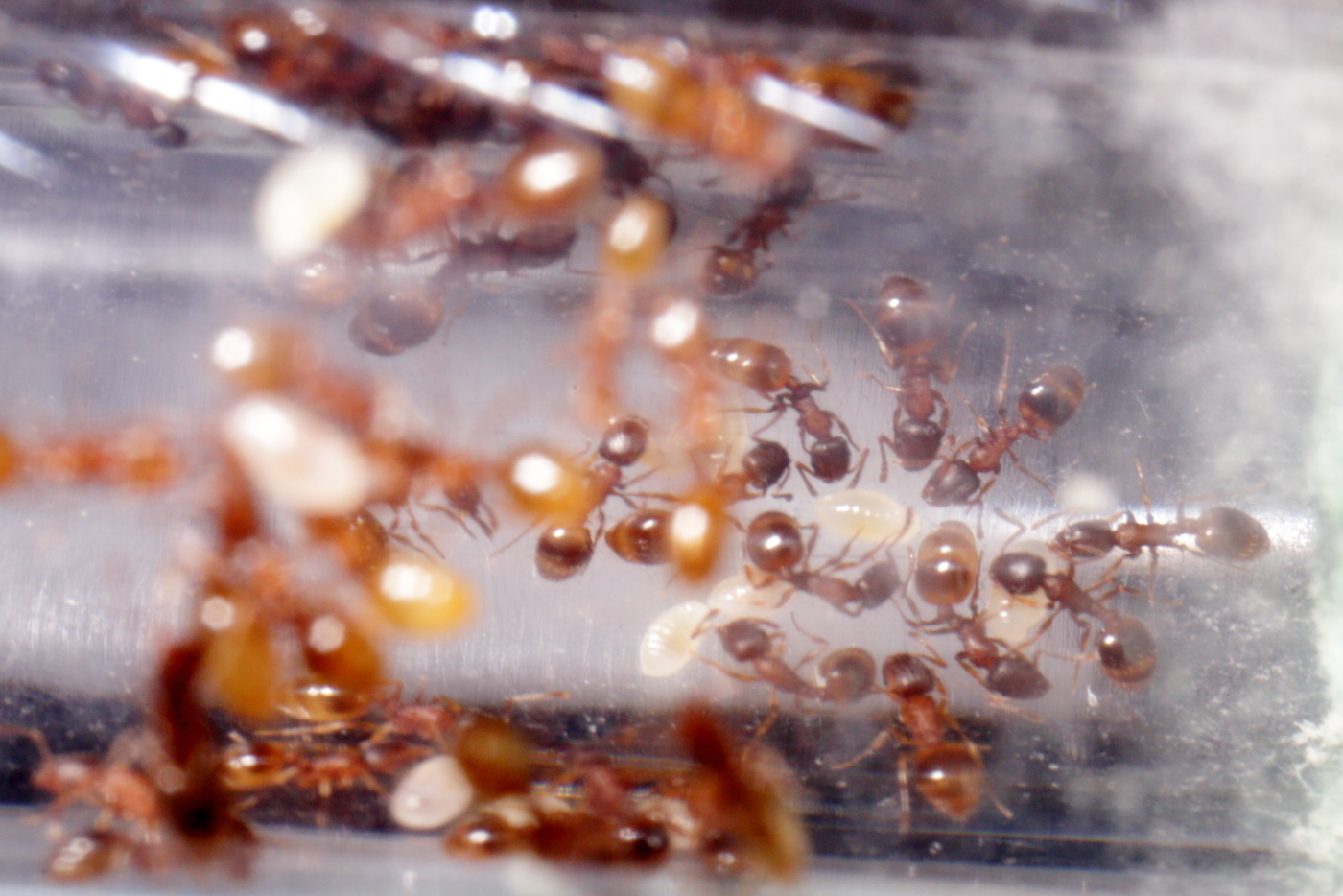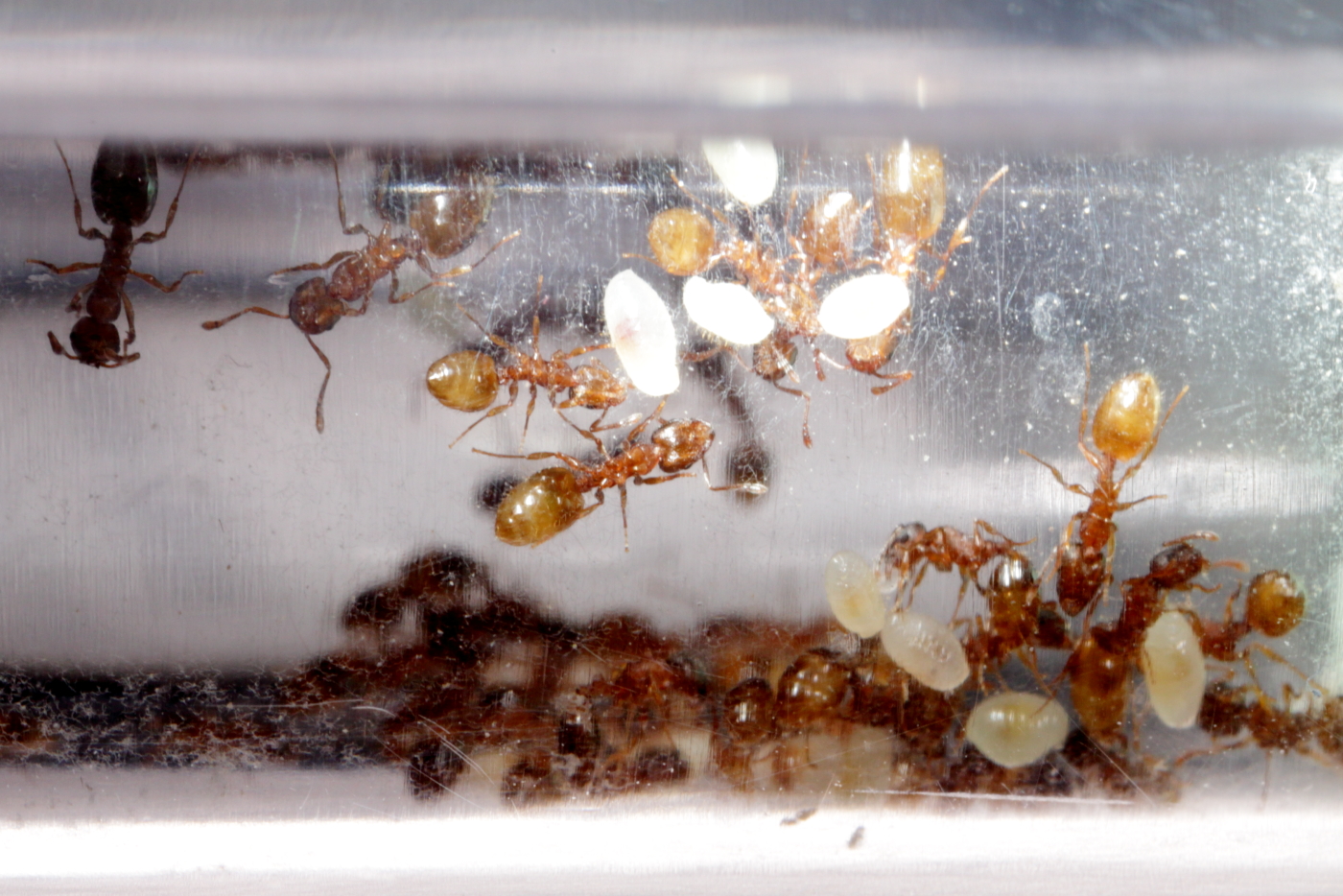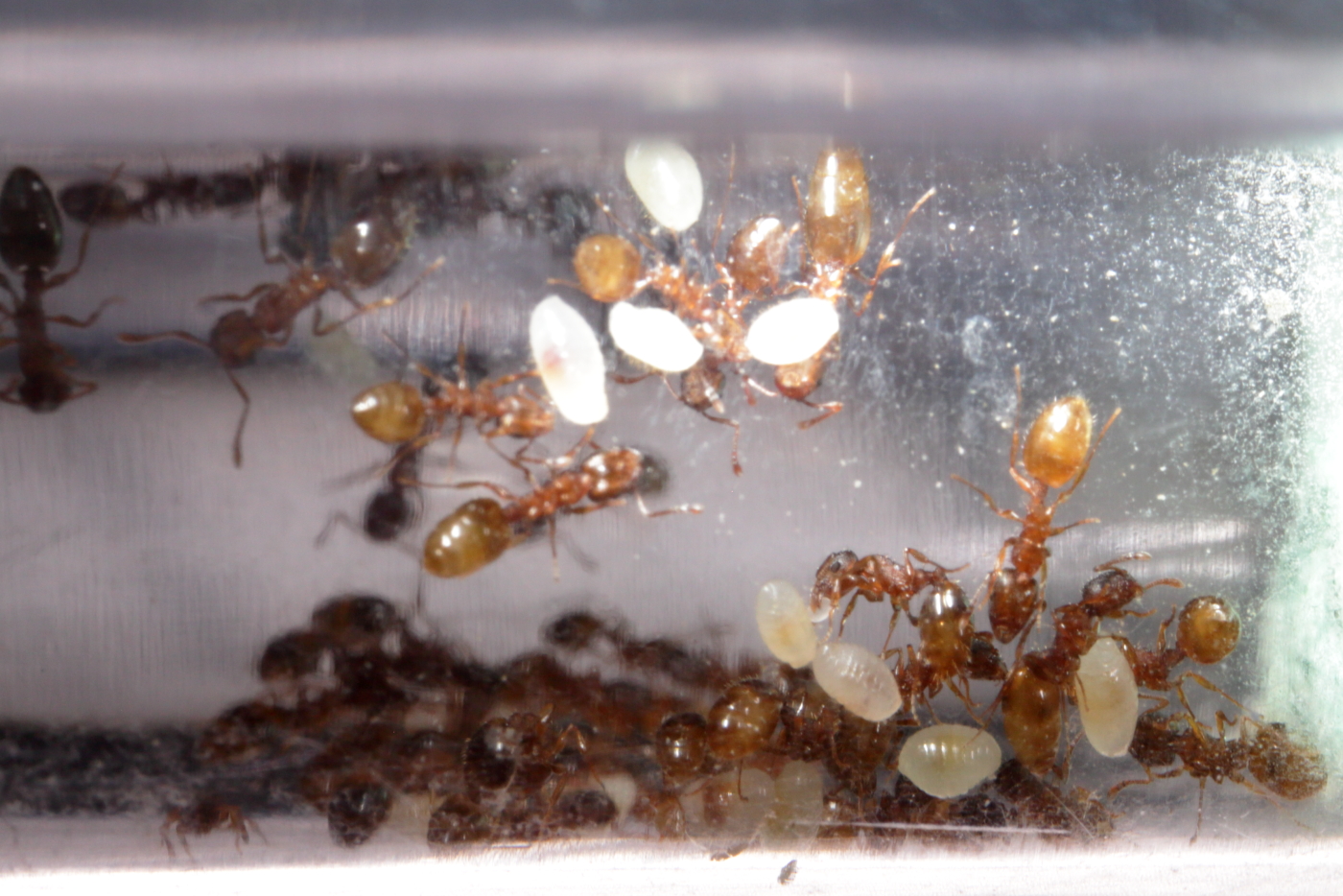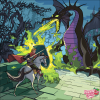Temnothorax sp.
This colony had 2 queens. About 6 weeks ago, both queens died with in 1 week of each other - I ID'ed them as queens. I did not rest them for the winter and had been pushing the temp into the high 80s during the day with 5 degree temp drop at night (Tucson is desert with many many 100+ degree days in the summer). The colony doubled in size and had a good mix of all phases of development. All workers appeared stuffed for food, clean water always available. Feed cricket frozen/thawed cricket parts, honey and grains.
Over the next 4 weeks, all eggs, larva, pupa continued to grow until there was only a couple dozen large developing pupa.
Then: Eggs started to reappear. In addition some of the eggs are now progressing to grow as larva.
What happened?
There are now close to 300 workers busy taking care of everything. I can not see anything that looks like a queen (no wing scars, none that look abnormally big, ...).
Original queen laying an egg.
--
Other info:
Thread Summary: Temnothorax sp.
1. Location (on a map) of collection: Central Tucson, AZ
2. Date of collection: Summer 2018
3. Habitat of collection: Sonoran Desert, 2000ft, urban mesquite trees and cactus
4. Length (from head to gaster): Queen 4mm, workers 2.5mm
5. Color, hue, pattern and texture:
6. Distinguishing characteristics:
7. Distinguishing behavior: calm, polygynous / polygyne (2 queen colony)
8. Nest description: Unknown
9. Nuptial flight time and date: Summer 2018
